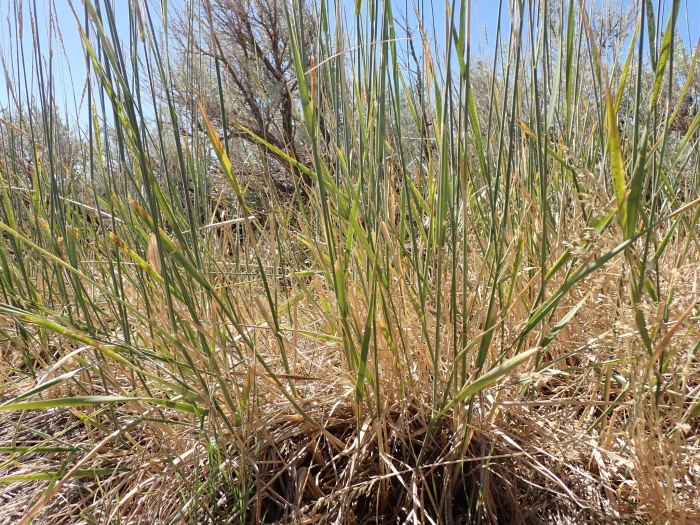Russian Wildrye
(Psathyrostachys juncea)
Russian Wildrye (Psathyrostachys juncea)
/
/

Matt Lavin
CC BY 4.0
Image By:
Matt Lavin
Recorded By:
Copyright:
CC BY 4.0
Copyright Notice:
Photo by: Matt Lavin | License Type: CC BY 4.0 | License URL: http://creativecommons.org/licenses/by/4.0/ | Rights Holder: Matt Lavin | Publisher: iNaturalist | Date Created: 2022-08-26T10:47:21-07:00 |

























Estimated Native Range
Climate Requirements for Forest Hills, Michigan
| This Plant | Your Site | Plant Suitability for Your Location | ||
|---|---|---|---|---|
| • Precipitation | 11" - 13" | 35" | Your precipitation may be too high for this plant. | Too high |
| • High Temp. | 68°F - 89°F | 82°F | Your summer temperatures are normal for this plant. | Excellent |
| • Low Temp. | -23°F - 16°F | 15°F | Your winter temperatures are normal for this plant | Excellent |
This plant may not grow well at your location - your precipitation is too high.
Summary
Psathyrostachys juncea, commonly known as Russian wildrye, is a drought-resistant perennial bunchgrass native to the steppes and semi-arid regions of Russia and Central Asia. It has been successfully introduced to parts of Canada and the United States, particularly the Great Plains, for agricultural purposes. This grass typically grows in tufts reaching up to 3 feet tall and is characterized by its dense basal leaves and deep, fibrous root system, which contribute to its resilience in challenging environments.
Russian wildrye is valued for its ability to provide forage for livestock, especially in arid regions where other grasses may fail. Its deep roots aid in soil stabilization, making it an excellent choice for erosion control. The plant is well-adapted to a range of harsh conditions, including drought, cold temperatures, and high soil salinity. It is not generally invasive and can be used in integrated planting schemes, such as alternating rows with legumes, to enhance soil nitrogen and improve forage quality. In cultivation, Russian wildrye performs best in full sun and requires well-drained soils. It is relatively low-maintenance once established but may require supplemental watering during prolonged dry spells.CC BY-SA 4.0
Russian wildrye is valued for its ability to provide forage for livestock, especially in arid regions where other grasses may fail. Its deep roots aid in soil stabilization, making it an excellent choice for erosion control. The plant is well-adapted to a range of harsh conditions, including drought, cold temperatures, and high soil salinity. It is not generally invasive and can be used in integrated planting schemes, such as alternating rows with legumes, to enhance soil nitrogen and improve forage quality. In cultivation, Russian wildrye performs best in full sun and requires well-drained soils. It is relatively low-maintenance once established but may require supplemental watering during prolonged dry spells.CC BY-SA 4.0
Plant Description
- Plant Type: Grass
- Height: 1.5-2.5 feet
- Width: 1-1.5 feet
- Growth Rate: Rapid
- Flower Color: N/A
- Flowering Season: Spring
- Leaf Retention: Deciduous
Growth Requirements
- Sun: Full Sun, Part Shade
- Water: Low
- Drainage: Medium, Slow
Common Uses
Drought Tolerant, Erosion Control, Low Maintenance
Natural Habitat
native to the steppes and semi-arid regions of Russia and Central Asia
Other Names
Common Names: Needle Grass, Lomkokolosnik Sitnikovyj, Xin Mai Cao
Scientific Names: Psathyrostachys juncea, Elymus alberti, Elymus altaicus, Elymus caespitosus, Elymus cretaceus, Elymus cretaceus, Elymus desertorum, Elymus desertorum var. angustifolius, Elymus desertorum var. desertorum
GBIF Accepted Name: Psathyrostachys juncea